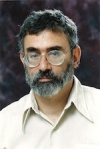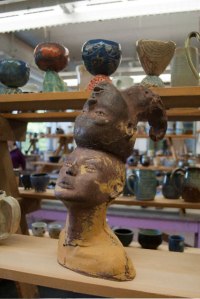By Alisa Sonsev
Richard Seigel is out to save the northern map turtle.
And that is no small feat. Until the Towson University biology professor began his research five years ago at the request of the state and federal governments, no one had seen the turtle in Maryland since 1992.
Seigel has since found enough to estimate there could be between 150 and 200 of the turtles in the state.
“One of the things you have to understand when you’re dealing with animals in the wild is that you never say something is not occurring, you say that there isn’t any evidence that anything is occurring,” Seigel said in a recent interview. “The animals are secretive and they surprise you all the time.”
For this efforts, Seigel was featured in the April 26th issue of a blog called Freshwater Species of the Week, run by National Geographic
“Sometimes media outlets have a tendency to already know what they want you to say, and you don’t get quoted accurately, but I think National Geographic did an especially good job with accurately reporting our work,” Seigel said.
Seigel was contacted by the Maryland Department of Natural Resources in 2008 and was asked to begin research on the northern map turtle. The study is in its sixth year now.
Most of the work has been done in Port Deposit, Md.,which Seigel described as being extremely supportive in the conservation efforts. Port Deposit is one of the only towns along the Susquehana River that plays host to the northern map turtle, according to Seigel.
“Very often the reaction to a community finding out that there’s an endangered species in the town limits is fear of restrictions that stop economic development, but Port Deposit realized that the turtle could become an economic asset to the town,” Seigel said.
Port Deposit has gotten investment from both the state and federal government as well as private funding, Seigel said. The town has also become a local hotspot for ecotourism, which is helping increase the town’s finances.
There is a plan in the works to revamp the Jacob Tome Gas House, an old historic structure in Port Deposit, and turning it into a combined environmental education center and field station for Towson University, Seigel said.
“This education center and field station will certainly be attracting a lot of people to come to the town,” Seigel said. “So, there’s a good upside to the turtle being a benefit to the town and from what we can tell there’s virtually no downside.”
The only restriction placed on Port Deposit, Seigel said, is that drivers must be careful where they drive their cars in certain areas because the turtles sometimes cross the roads.
Seigel said that the town also has a safe harbor agreement with the state, which says that if the town makes certain commitments to protect the turtle and the turtle population expands, then the town won’t face further restrictions on economic development.
“That’s something that’s been done on the national level, but to my understanding that was one of the first times, if not the first time, it’s been done in the state of Maryland,” Seigel said.
While the Port Deposit aspect of the conservation effort is important, Seigel said that it is not a large enough segment of the population to sustain a viable species in Maryland. The biggest impact on the species, he said, is the affect of flooding from the Conowingo Dam in the Susquehana River.
“One of the problems that the turtle faces is the amount of water that the dam releases when it’s generating electrical power,” Seigel said. “There is a big increase in the water level, and most of the natural basking sites for the turtles gets covered by the water.”
With funding from the Exelon Corp., the researchers have put an emphasis on making artificial basking platforms that adjust with the water level for the turtles. Basking is essential for all reptiles to raise their body temperatures, and it’s critical for them to keep their reproductive cycles going.
In 2009, Seigel brought Teal Richards-Dimitrie, a former graduate student, onto the project to do field work such as behavioral observations and nesting surveys. There are now five Towson students, four undergraduates and one graduate, who are involved in the project.
“There’s always been a good number of students who want to participate in the project,” Seigel said. “It’s a great opportunity for Towson students to get involved in doing undergraduate research.”
Graduate student Kaite Anderson has been involved with the project for two years and has decided to write her master’s thesis on the study.
“In short, my thesis is basically about how habitat characteristics influence basking behavior in northern map turtles,” Anderson said.
Undergraduate Kristen Kolenda said she has only been involved with the project for a few weeks, but she wants to continue doing extended research on the topic.
“One of my life goals is to work with endangered species, and I consider this to be an extremely lucky opportunity for me,” Kolenda said.
Port Deposit has made many great strides to preserving the turtle, and Seigel said that according to his knowledge, no other small towns along the Susquehana have northern map turtles.


